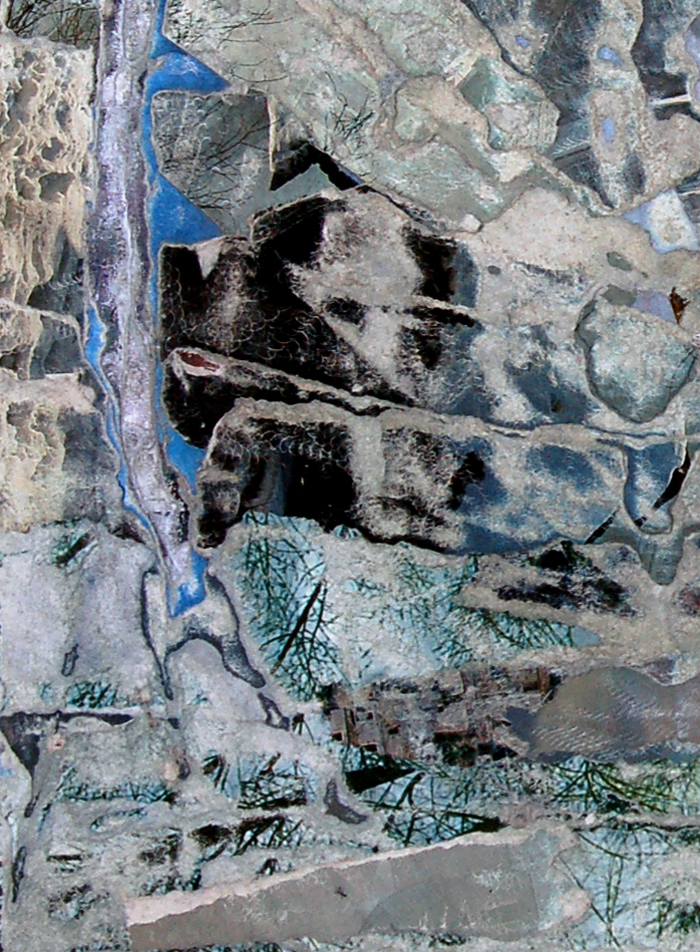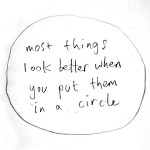When's a circle a circle? Tried it out today when I found a small mountain…
The idea of a circle
Posted by Everdien on 6/18/11 • Categorized as All posts
“Almost every artist makes, draws, paints or steals a ‘house’ at one time, says the Dutch performance- singing- en visual artist Moniek Toebosch. Not so much to build as to construct, to visualise. There are a number of archetypes that almost every artist researches at a certain time: house, car, bird, boat, and so on.” Quote from ‘Zo werken wij’ by Sacha Bronwasser, my translation.
I got hooked on another category of archetypes: lines, circles, plus and minus signs. They carry a lot of meaning for me. The exiting discovery of the exact language of mathematics when I was a teenager; building models of the real world as a land surveying engineer; the contrasting forces of order and chaos that have been a theme throughout my life. I’m not keeping exact score, but it feels like Order: 1 – Chaos:3 these days. I am, of course, mother of a large(r) family, which is a major influence here.
I am all for order, and a perfect circle is the ultimate order. But the most perfect circle is the circle undrawn, the idea of a circle in one’s mind. Researching this, I learned today that Plato has dealt with this in something called his Seventh Letter. In this Letter he explains the perfect circle, and how it is different from any drawing, words, definition or explanation.
Wiki: Plato’s explanation of why the deepest truths cannot be expressed in written form is famously abstruse. Before one attains the “thing which is cognizable and true” (gnōston te kai alēthes), one must have apprehended the “name,” “account” (logos), “image,” and “knowledge” (epistēmē). Name and account are approached through verbal description, while sense perception perceives the image. One attains knowledge only from the combination of verbal description and sense perception, and one must have knowledge before one can attain the object of knowledge (which Plato calls simply “the Fifth,” name, account, image, and knowledge being “the Four”). The Fifth, moreover, differs from what is sensible and verbal expressions of it. Name and account provide the “quality” of a thing (to poion), but not its “essence” or “being” (to on). They are, moreover, akin to sense perceptions in that they are ever shifting and relative, not fixed. As a result, the student who attempts to understand the Fifth through name, account, image, and knowledge is confused; he seeks the essence, but always finds the quality intruding. Only certain kinds of student can scrutinize the Four, and even then the vision of the Fifth comes by a sudden flash.
Gerelateerd:
-
Circle is circle?
-
Banksy circle
This is a Banksy - rings a bell? It did for me! The 'everything looks…
| « The experience of being E(a)rnest | <-- previous post | next post --> | Have one’s cake – and eat it. » |
|---|








